Ultimate Guide to Meditation Garden Boundaries
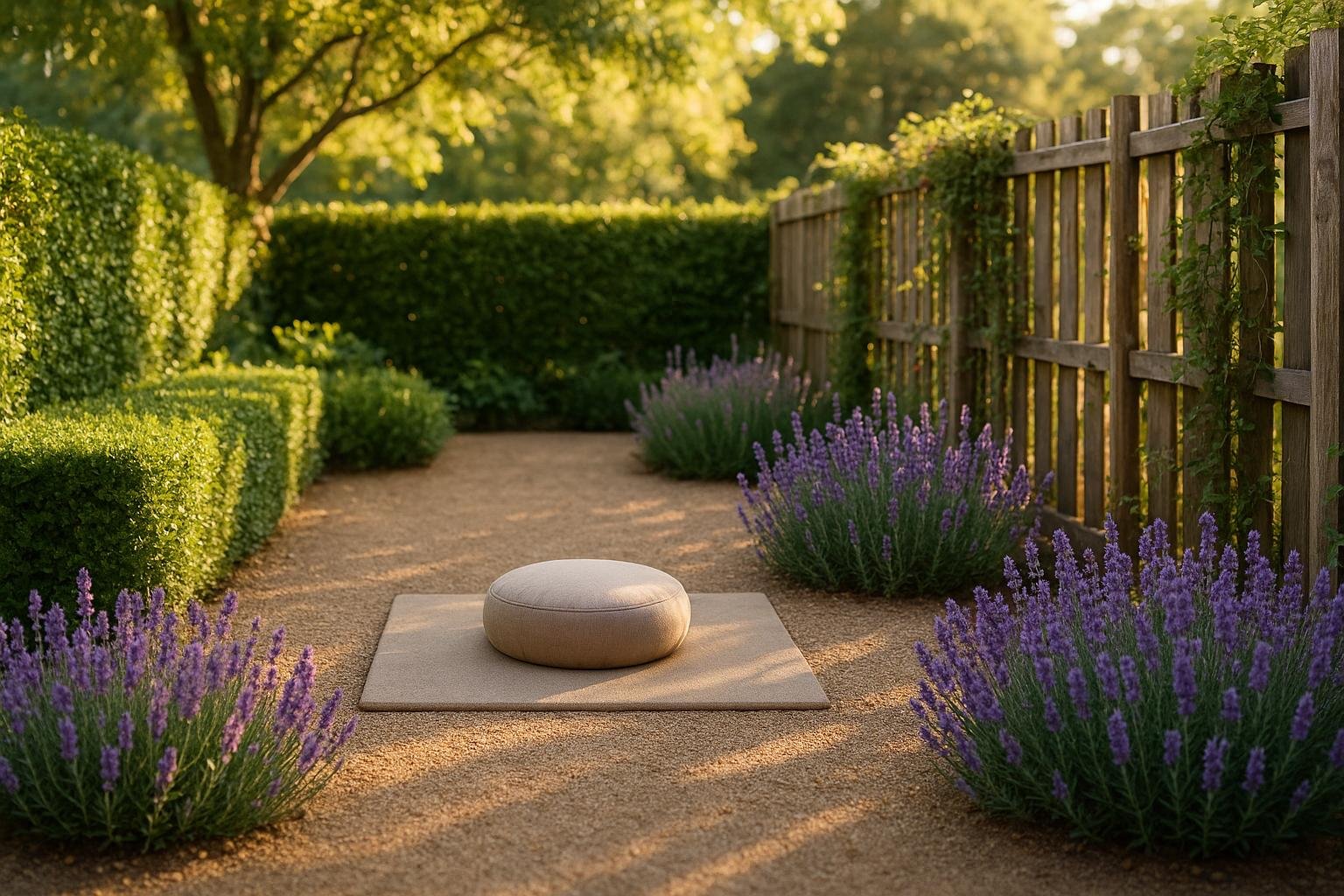
Creating a meditation garden is all about defining a peaceful space where you can escape distractions and focus inward. Boundaries are key - they provide privacy, reduce noise, and set the tone for relaxation. Whether you use hedges, fences, or a mix of both, the goal is to create a calming sanctuary that feels safe and inviting.
Key Details:
- Living Boundaries: Hedges, bamboo, or trees add natural beauty and privacy. They can block noise and evolve with the seasons.
- Built Boundaries: Fences, walls, or screens offer immediate privacy and structure. Materials like wood, stone, or metal can suit different styles and climates.
- Blended Options: Combine living and built elements for a balance of beauty and functionality, like a stone wall with climbing vines.
- Design Tips: Keep boundaries simple, proportional to the space, and aligned with your garden’s features. Use natural colors and materials to maintain a tranquil vibe.
- Climate Considerations: Choose plants and materials suited to your local weather to ensure durability and low maintenance.
Pro Tip: Tools like AIGardenPlanner can help visualize and customize your garden boundaries, making the process easier and more precise.
Boundaries do more than define a space - they create the foundation for a serene, distraction-free meditation experience.
DESIGN COURSE Part 3: Endless Boundaries

Boundary Materials and Their Features
The materials you choose for your meditation garden boundaries play a key role in shaping both its look and functionality. They influence how well your garden can block distractions, create privacy, and maintain its tranquil atmosphere. By understanding the features of different boundary options, you can make choices that align with your garden’s purpose and fit your local climate. Below, we’ll explore living, built, and hybrid boundary options to suit a variety of needs.
Living Boundaries: Hedges, Bamboo, and Trees
Living boundaries bring a natural charm to meditation gardens. They not only offer privacy and noise reduction but also evolve with the seasons, adding a dynamic element to your space.
Hedges, such as boxwood and privet, are a classic choice. While they take time - sometimes a few years - to grow into a dense, full barrier, they’re worth the wait. These shrubs thrive in well-drained soil and require regular watering and trimming to maintain their shape. Once established, they create an effective, long-lasting screen that muffles sound and enhances privacy.
Bamboo is another popular option, especially if you’re looking for quick results. Its fast growth makes it ideal for adding height in a short time. However, some bamboo species spread aggressively through underground roots, so it’s important to use concrete planters or root barriers to keep it contained. Beyond its practical benefits, bamboo’s rustling leaves add a soothing auditory element to your garden.
Trees can create a sense of enclosure and provide overhead shade, adding vertical interest to your space. Choosing the right species for your climate is essential - birch and maple are great for northern regions, while desert willow thrives in drier, southwestern areas. Though trees take years to mature, they offer enduring beauty, shade, and a sense of permanence once they’re fully grown.
Living boundaries not only define your garden but also connect it to the surrounding landscape. They change throughout the year, offering spring blooms, summer greenery, autumn colors, and winter structure.
Built Boundaries: Fences, Walls, and Screens
If you need immediate privacy and a clear sense of enclosure, built boundaries are the way to go. These permanent structures can be customized to suit your aesthetic and practical needs, making them especially useful in urban or high-traffic areas. Here’s a quick comparison of some common materials:
| Material | Durability | Cost (USD) | Design Flexibility | Maintenance |
|---|---|---|---|---|
| Wood Fence | Moderate | $15–$45/ft | High | Moderate |
| Stone Wall | High | $25–$80/ft | Low | Low |
| Metal Screen | High | $30–$100/ft | High | Low |
Wood fences are a versatile and warm option. They come in various styles, and materials like cedar and redwood naturally resist rot and insects. While they do require occasional maintenance to prevent weathering, their adaptability makes them a popular choice for many garden designs.
Stone walls, on the other hand, offer a sense of permanence and timelessness. They blend seamlessly with greenery, require minimal upkeep, and are particularly well-suited for areas with harsh winters, as they can withstand freeze-thaw cycles.
Metal screens provide a sleek, modern look with excellent durability. Powder-coated aluminum or steel screens resist corrosion and can be customized with intricate patterns. They allow for adjustable levels of privacy while adding a decorative touch, all with minimal maintenance.
Built boundaries are ideal for creating an immediate sense of privacy and structure, especially in spaces where plants may take time to grow or where seasonal changes limit greenery.
Mixing Living and Built Elements
Combining living and built elements can give your garden the best of both worlds. This approach allows you to enjoy the immediate benefits of built boundaries while incorporating the natural beauty and seasonal changes of plant life.
For example, a stone wall topped with climbing vines offers a sturdy, year-round base with a softer, green layer above that evolves with the seasons. Similarly, pairing a wooden fence with bamboo creates a multi-layered screen - providing instant privacy while the bamboo adds height and movement.
This blended strategy ensures your garden remains private and serene, even as plants grow or during seasonal shifts. Built elements provide consistent coverage, while living elements add depth, texture, and a sense of connection to nature. Together, they create a harmonious and adaptable space, perfect for meditation and relaxation.
Design Rules for Meditation Garden Boundaries
Establishing boundaries in a meditation garden is about more than just defining its edges. Thoughtful design ensures these boundaries contribute to the tranquility of the space, enhancing rather than detracting from its calming atmosphere.
Simplicity and Balance
At the heart of a well-designed meditation garden boundary is simplicity and balance, inspired by Zen aesthetics. A clean, minimal design helps cultivate a serene environment, reducing distractions and fostering mindfulness.
Opt for natural forms and clean lines - think a simple wooden fence or a curved hedge that follows the garden’s contours. This approach creates a sense of calm and focus, essential for meditation.
Balance is equally important. Every element should feel proportional to the garden's size. Oversized features can dominate and disrupt the harmony of a smaller space, while undersized elements may seem insignificant in a larger garden. A useful guideline is the "law of significant enclosure", which suggests that boundary height should be about one-third the length of the enclosed area. For instance, a 4-foot hedge is ideal for a 12-foot-long garden. Smaller spaces benefit from low fences or compact hedges, while larger gardens can accommodate taller or more substantial boundaries.
The color palette for your boundaries also plays a crucial role. Soft, natural tones like greens, blues, and earthy hues promote relaxation, while bright or jarring colors can disrupt the meditative atmosphere. Using materials like weathered wood, aged stone, or living plants naturally brings these calming tones into the space.
Enclosure and Borrowed Scenery
A sense of enclosure is vital in meditation gardens, but it’s important to strike the right balance. The goal is to create a sanctuary that feels protected yet not confined, maintaining a connection to the surrounding environment.
Semi-transparent boundaries are an excellent choice for this purpose. Bamboo screens, lattice fences, or layered plantings provide privacy while still offering glimpses of the world beyond. This design approach creates a sense of separation without complete isolation.
The idea of "borrowed scenery" - a principle from traditional Japanese garden design - can also enhance your meditation garden. This involves incorporating views of the surrounding landscape into your garden's design. Instead of completely blocking out your surroundings, position boundaries to frame distant trees, hills, or water features. This technique makes the space feel more expansive and connected to nature.
Practical ways to achieve this include using lower fences that allow sightlines to beautiful views or creating intentional openings in taller boundaries to frame specific features. For example, a 3-foot stone wall might provide privacy from neighbors while still showcasing mature trees or rolling hills in the distance.
Entry points are another key element. Gates, pergolas, or arbors at the garden's entrance define the space without making it feel closed off. A simple wooden gate or an arbor draped with climbing vines creates a welcoming transition into the meditative space.
Connecting Boundaries with Garden Features
Boundaries should seamlessly integrate with the garden’s other elements, such as pathways, seating areas, and focal points, to create a unified and peaceful experience. Align boundaries with these features to ensure a natural flow. A winding path leading to a bench backed by a solid wall or a water feature framed by a boundary can enhance both focus and movement within the space.
Using coordinated materials or colors ties the boundaries to the rest of the garden. For instance, if you choose cedar for your fence, consider using cedar for benches or planters. If you incorporate natural stone into a boundary wall, use similar stones in pathways or as accents around seating areas. This consistency creates a cohesive design that feels intentional and calming, rather than disjointed.
Ultimately, every element in your meditation garden should work together to support a single purpose: providing a peaceful retreat that encourages quiet reflection and inner calm.
sbb-itb-4d6a8dd
🚀 Ready to Reinvent Your Garden?
Join thousands of homeowners who have transformed their gardens using our AI design tool. Upload one photo to explore endless possibilities.
Get your AI garden designs →Regional Tips for Boundary Planning
Designing boundaries for a meditation garden starts with understanding the unique characteristics of your local environment. The United States covers a wide range of climate zones, each with its own set of challenges and opportunities. Here's how local conditions can shape your choices.
Choosing Materials for Local Climates
The materials and plants you select should align with your region's specific climate. Tools like USDA Hardiness Zones and ecoregion data are invaluable for making informed decisions [1][2][5][6][7][8]. While hardiness zones focus on temperature ranges, ecoregions take a broader view, factoring in precipitation, wildlife, soil types, and more [8]. This distinction is crucial because two locations with similar hardiness classifications - like Phoenix, Arizona, and El Paso, Texas - can have vastly different ecoregions, requiring tailored approaches.
For example, in the Pacific Northwest, where the climate is mild and wet, living boundaries like Western Red Cedar hedges or Rhododendron screens thrive. Materials such as naturally rot-resistant cedar or high-quality composites are excellent for handling the region's moisture-rich conditions.
In contrast, the Southwest's arid landscape demands drought-tolerant plants like palo verde trees or desert willows. Built boundaries using local stone or stucco blend well with the environment and stand up to the dry heat. While metal fencing is an option, it should be used cautiously, as it can become extremely hot under the intense summer sun.
Southeastern areas face high humidity, scorching summers, and occasional hurricanes. Clumping bamboo (avoiding invasive varieties) works well for living screens, while vinyl or aluminum boundaries resist mold and rot better than untreated wood.
In Northern climates, such as Minnesota or Maine, boundaries must endure freezing winters and fluctuating temperatures. Native conifers like Eastern White Pine or Balsam Fir provide year-round privacy, while built options like natural stone walls or treated lumber with proper drainage can handle freeze-thaw cycles effectively.
Microclimates created by nearby structures or trees can also influence boundary choices [2][5][6]. For instance, a south-facing wall may support plants that prefer warmth, while shaded north-facing areas might require cooler-tolerant species.
Native plants are especially beneficial, as they require less maintenance and water while blending seamlessly into the garden's aesthetic [3][4][8]. To ensure success, test your soil for drainage and moisture retention before selecting plants or materials [3][4][6]. Tailoring your choices to these factors helps maintain the garden's tranquility year-round.
Balancing Privacy and Sunlight
Once you've chosen materials suited to your climate, it's time to focus on balancing privacy with sunlight. Thoughtful placement of boundaries can create a peaceful retreat without sacrificing natural light.
Design boundaries to allow soft morning light while adapting to the sun's seasonal angles. For instance, east-facing openings or shorter boundaries on the eastern side can welcome the morning sun while still offering privacy later in the day.
Layering is another effective strategy. Place taller elements, like trees or high fences, where privacy is most needed - such as along property lines or near busy streets. Closer to seating areas, use shorter hedges or ornamental plants to maintain a sense of openness while still providing some screening.
Partial screening can also strike the right balance. Instead of a solid wall, consider options like bamboo screens, lattice panels with climbing vines, or staggered plantings. These choices provide about 70–80% coverage, offering privacy while letting dappled light filter through, which enhances the garden's calming atmosphere.
Strategic openings in otherwise continuous boundaries can frame scenic views, such as a distant mountain or a majestic tree, while maintaining overall seclusion. Be mindful of reflective surfaces, as light-colored walls or fences can create glare. Opt for matte finishes or position materials to minimize reflections, keeping the space serene and inviting.
Seasonal flexibility is another key consideration. Features like removable screens, adjustable louvers, or seasonal plantings can adapt to changing sun angles and privacy needs throughout the year. These adjustments complement your garden's design while ensuring it evolves gracefully with the seasons.
Using Tools to Plan Meditation Garden Boundaries
Planning the boundaries of a meditation garden can feel like a daunting task, especially when juggling factors like climate, materials, and design preferences. Thankfully, AI-powered tools make this process easier, no matter your experience level.
How AIGardenPlanner Helps with Boundary Design
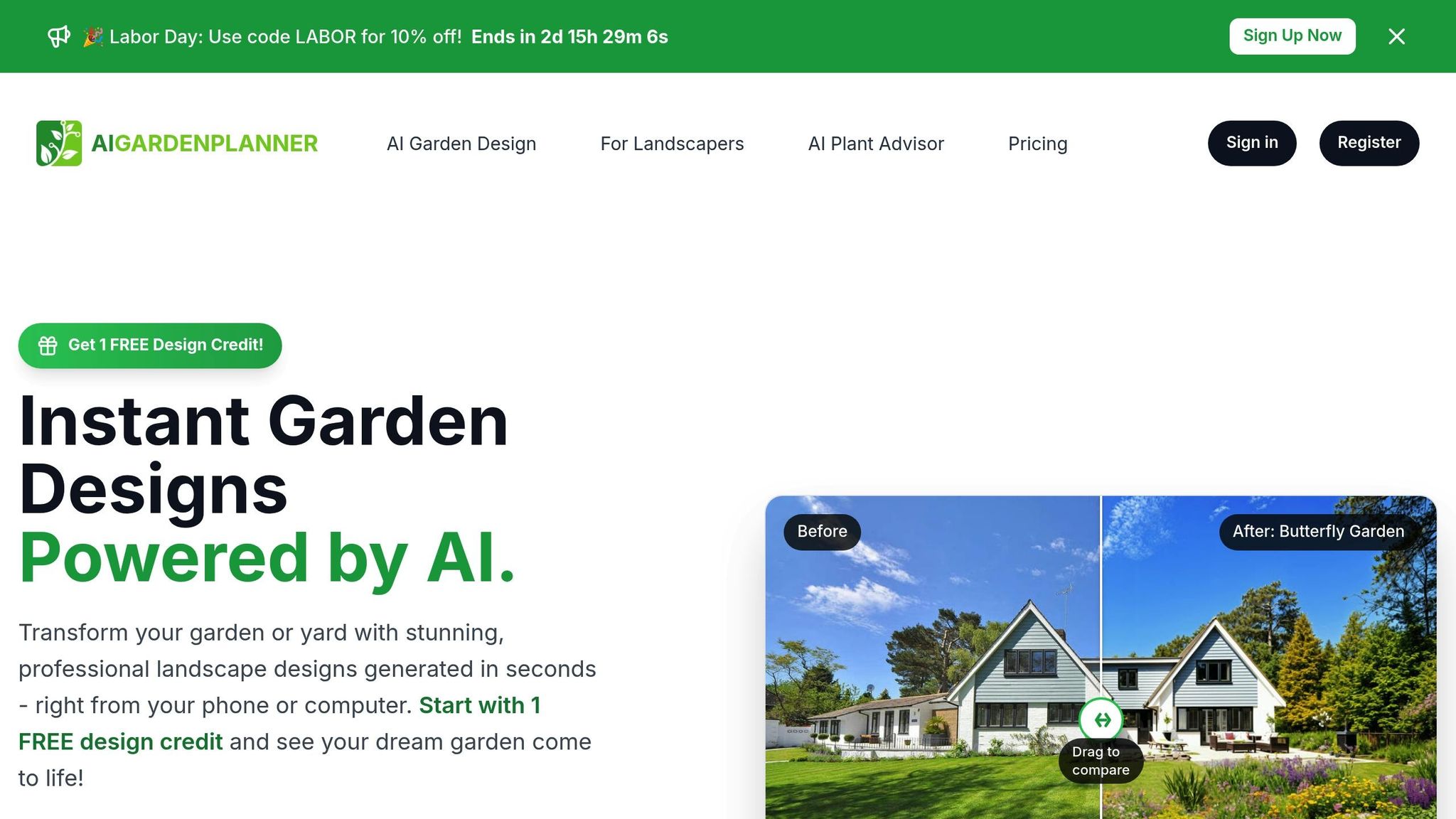
AIGardenPlanner combines artificial intelligence with garden design know-how to simplify boundary planning. By analyzing a photo of your garden, the platform generates professional boundary designs tailored to your space.
One standout feature is the AI Plant Advisor, which takes the guesswork out of choosing plants for living boundaries. Instead of relying on trial-and-error, it offers personalized recommendations for hedges, trees, or shrubs that will thrive in your specific climate. This ensures the boundaries not only look great but also maintain the calm, focused atmosphere essential for a meditation garden.
The platform offers over 50 garden styles, from minimalist Zen-inspired designs with clean lines to more eclectic planting styles. You can adapt these templates or create something entirely unique to match your vision. Additionally, location-based recommendations ensure your choices align with your environment, and detailed growing guides provide the know-how needed to care for your plants.
Visualizing and Customizing Boundary Layouts
AIGardenPlanner goes beyond recommendations with tools that let you visualize and customize your designs. Figuring out how different materials and layouts will look in your garden can be tricky, but the platform’s realistic visualizations make it easier to see how everything fits together before any work begins.
High-resolution design downloads let you preview how proposed boundaries interact with your garden’s existing features. This can help you spot potential issues, like unwanted shadows or blocked views, early in the process.
Customization tools allow for real-time adjustments to boundary height, materials, and placement. For instance, if the initial design includes a 6-foot privacy fence but you'd prefer a shorter option to preserve a scenic view, you can tweak it instantly. There's also flexibility to mix living and built elements, such as combining stone pillars with decorative panels or lush greenery for added character.
For professional landscapers, the platform offers commercial licenses, enabling them to manage multiple projects and tailor options to different client budgets and maintenance preferences.
The project management features are especially useful for organizing various boundary concepts for the same space. For example, you could design one project focused on privacy with tall hedges, another featuring partial screening with ornamental details, and a third highlighting cost-effective solutions using native plants. These tools give you everything you need to create boundaries that perfectly frame your meditation retreat.
Conclusion: Creating the Perfect Meditation Garden Boundary
Designing the boundaries of your meditation garden is all about striking a balance between privacy, focus, and harmony with nature. The materials you choose play a key role in defining the space and enhancing its purpose.
Consider using living elements like hedges or bamboo, built structures such as stone walls or wooden fences, or a blend of both. These choices should complement the natural surroundings while creating a sense of enclosure and peace.
Keep the design simple and functional, ensuring it frames your garden beautifully and aligns with the local climate. Tools like AIGardenPlanner can simplify the process, offering detailed visualizations and customizable layouts to bring your vision to life.
Your garden boundary should seamlessly blend into the space, enhancing its role as a retreat for mindfulness. Whether you prefer the calming sway of greenery, the sturdy charm of stone, or a mix that reflects your personal taste, the right boundary turns your garden into a true sanctuary. Thoughtfully crafted boundaries not only block out distractions but also deepen your connection to the space, making every moment spent there a restorative escape.
FAQs
What’s the best way to combine natural and structural boundaries for a meditation garden?
To design a serene and private meditation garden, it's all about finding the right mix of natural and man-made boundaries. Living boundaries - like hedges, bamboo, or tall grasses - offer a natural sense of privacy while fostering a connection to the outdoors. They also bring soothing elements like gentle movement, soft textures, and calming colors. Meanwhile, built boundaries - such as fences, stone walls, or decorative screens - help define the space and add a touch of structure to the overall design.
The secret lies in blending these two types seamlessly. For instance, you might pair a wooden fence with climbing vines or place tall grasses alongside a stone wall. This thoughtful combination not only ensures privacy but also creates a tranquil, balanced environment that’s ideal for meditation.
What are the most durable materials for meditation garden boundaries in areas with extreme weather?
For meditation gardens located in areas with harsh weather conditions, picking sturdy boundary materials is key to creating a lasting, low-maintenance space. Vinyl fencing stands out as a solid option, as it holds up well against rain, snow, and UV rays, making it suitable for both scorching summers and freezing winters. Materials like aluminum and galvanized steel are also excellent, providing strong resistance to rust and withstanding high winds. For those leaning toward environmentally friendly choices, composite fencing is worth considering - it resists moisture, doesn’t rot, and avoids warping, making it particularly useful in humid or rainy climates.
Choosing the right fencing ensures your meditation garden remains a tranquil, durable retreat, no matter the weather.
How can I create boundaries in my meditation garden that ensure privacy while keeping it open to natural light and scenic views?
To create a peaceful and private meditation garden while still enjoying natural light and beautiful views, consider using tall hedges or trees around the edges. These natural barriers provide privacy and blend harmoniously with the garden's overall look. If you prefer something different, trellises with climbing plants or bamboo screens can offer a secluded atmosphere without shutting out sunlight or obstructing the scenery.
For an even more calming experience, try setting up your garden in a quiet, tucked-away part of your yard, far from noise and distractions. By thoughtfully designing the layout and boundaries, you can craft a tranquil space that feels both intimate and connected to the outdoors.
🎨 Visualize Your Dream Garden Today!
Transform any outdoor space into a professional landscape design in minutes. Just upload a photo, choose your style, and let our AI do the rest.
Start your garden transformation now →Related posts
Related Articles
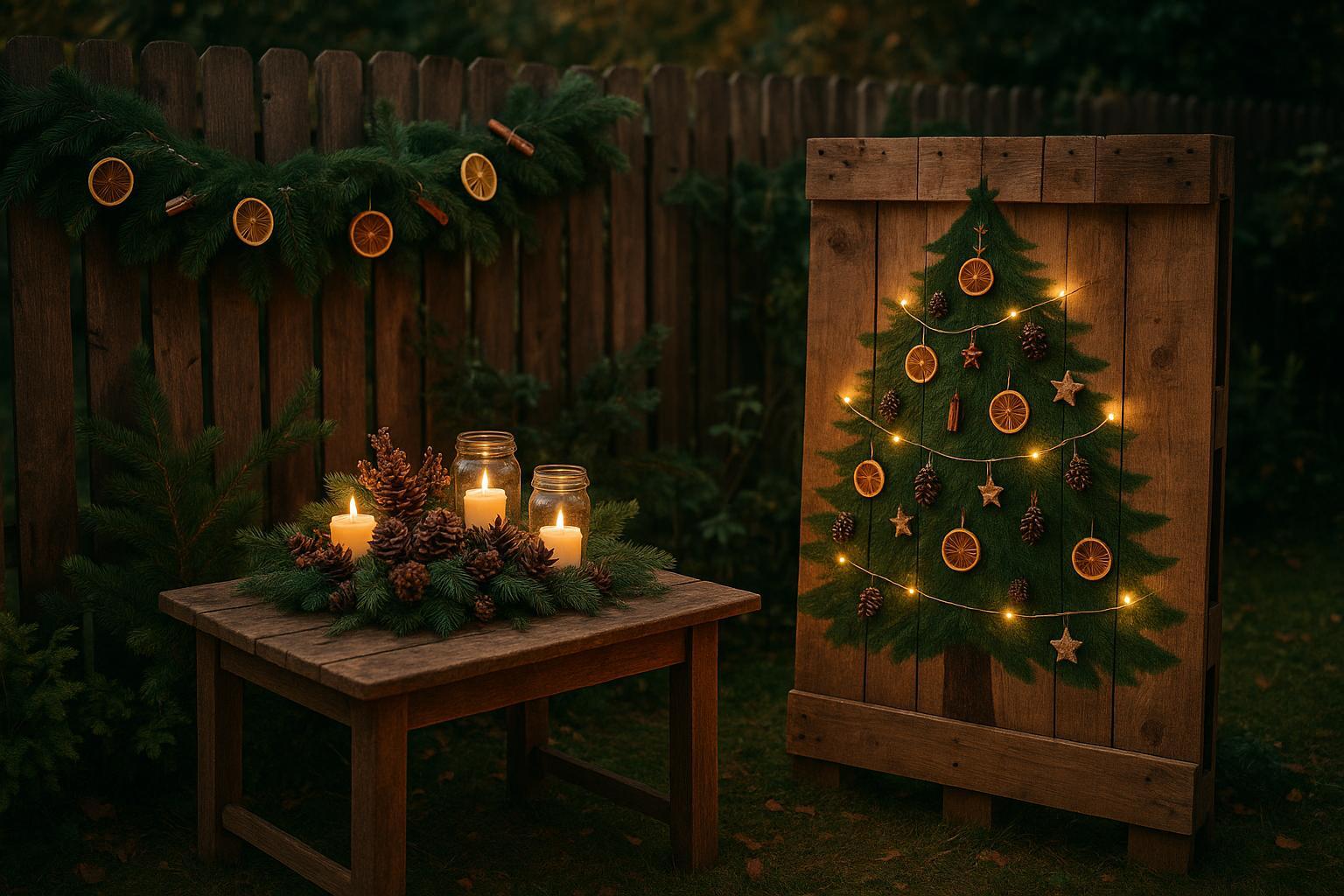
10 DIY Eco-Friendly Christmas Garden Decorations
Create beautiful, eco-friendly Christmas garden decorations using natural and recycled materials to celebrate sustainably this holiday season.
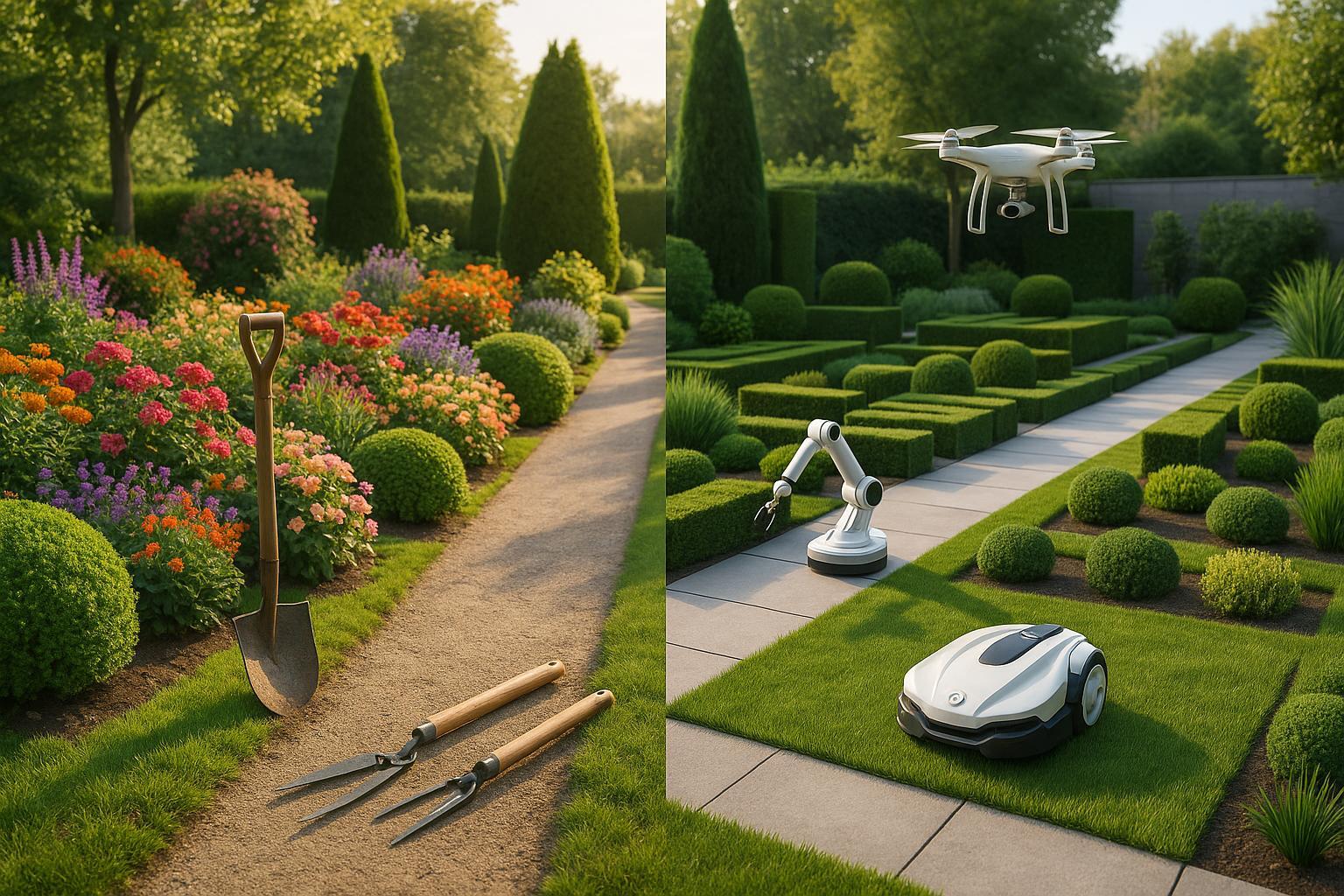
AI vs. Traditional Methods for Garden Restoration
Explore the advantages and challenges of AI-powered tools versus traditional methods in garden restoration to find the best approach for your project.

Top Landscape Design Software for Windows: Features and Comparison
Discover the best landscape design software for Windows, with features to look for and a comparison of popular options including SketchUp, PRO Landscape, and Realtime Landscaping.
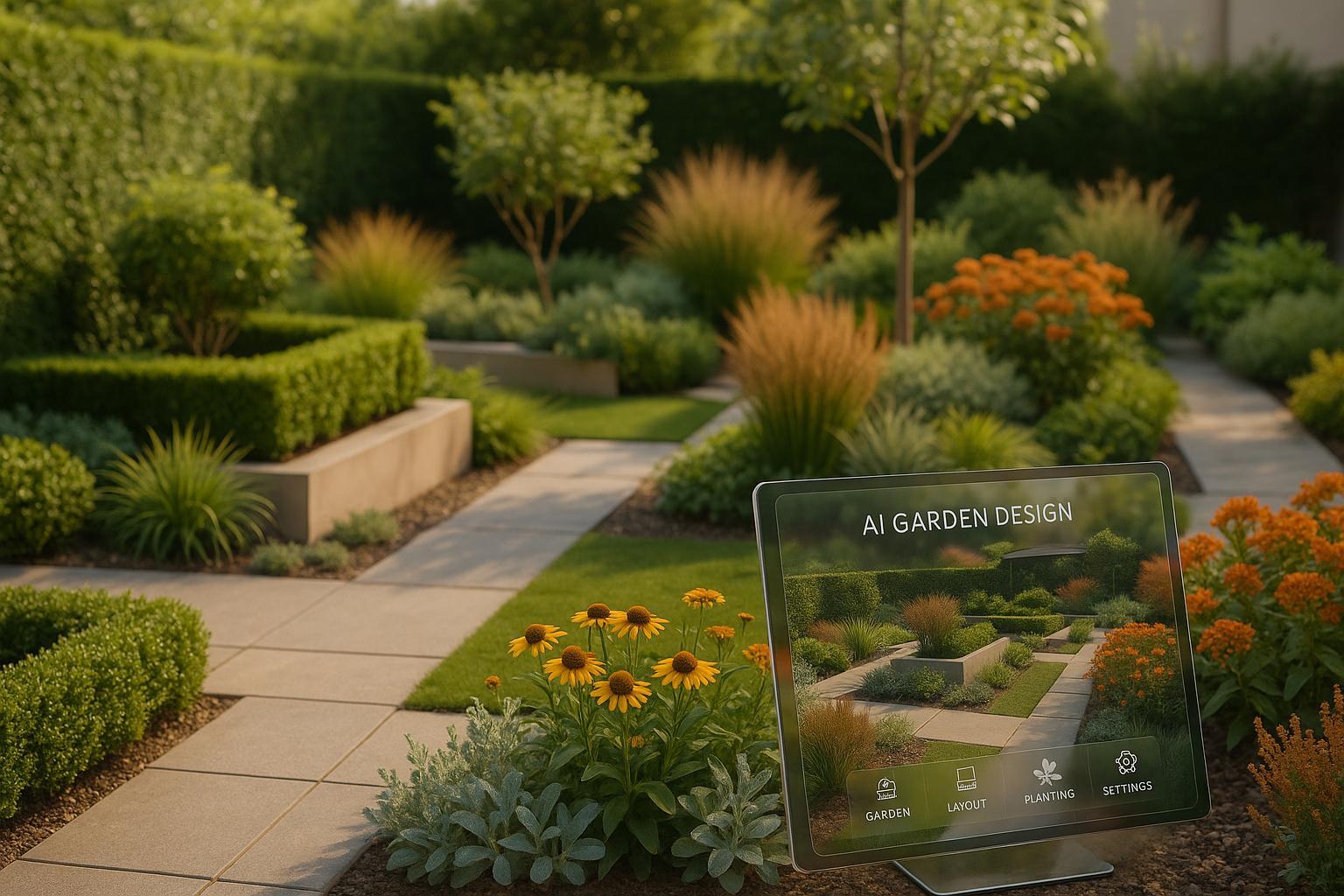
How AI Adjusts Garden Styles Instantly
Unlock the power of AI in garden design with instant customization, eco-friendly plant suggestions, and professional-quality layouts tailored to your space.
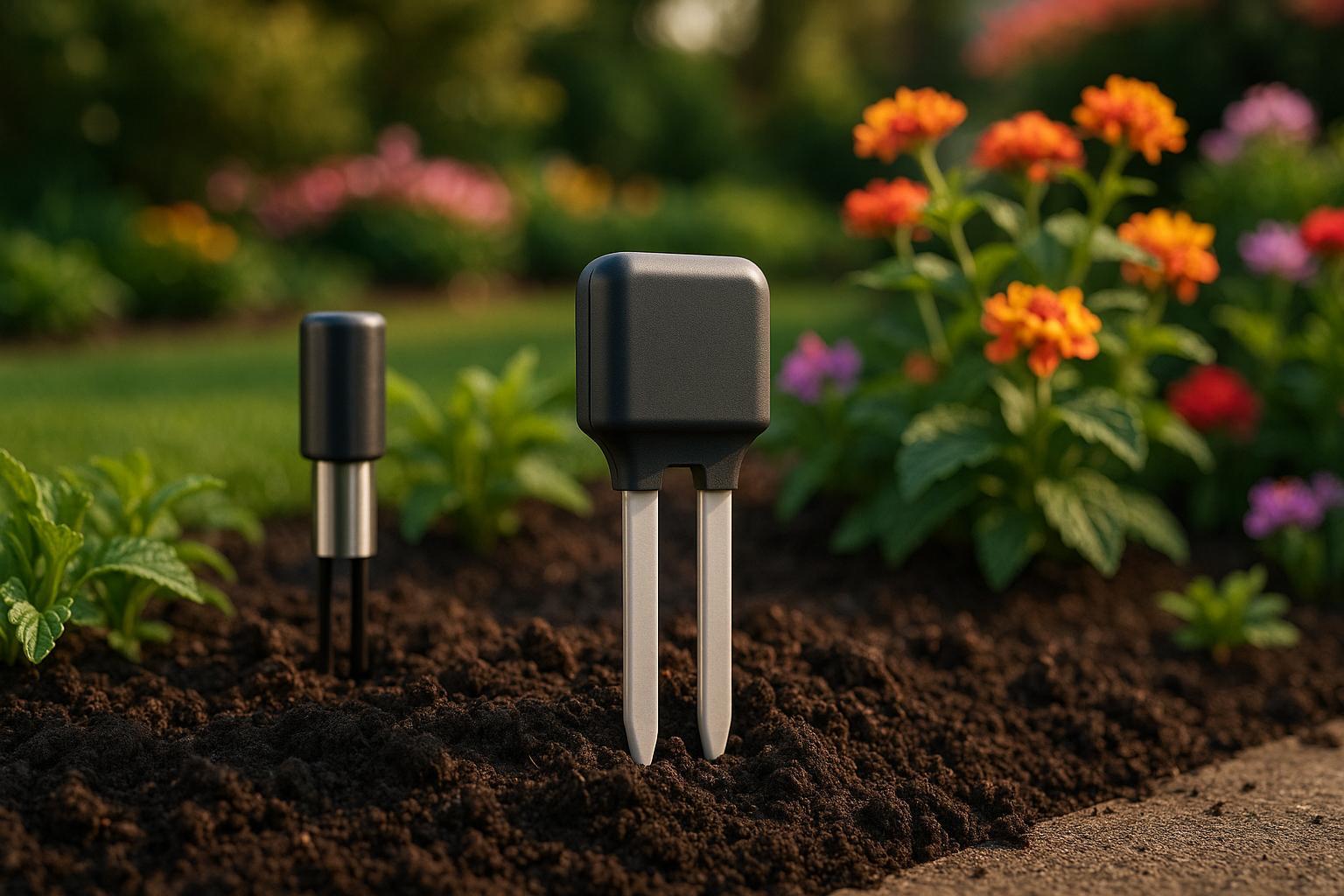
Ultimate Guide to Durable Sensor Materials for Gardens
Explore durable sensor materials for gardens that enhance performance, save costs, and improve water management for thriving plants.
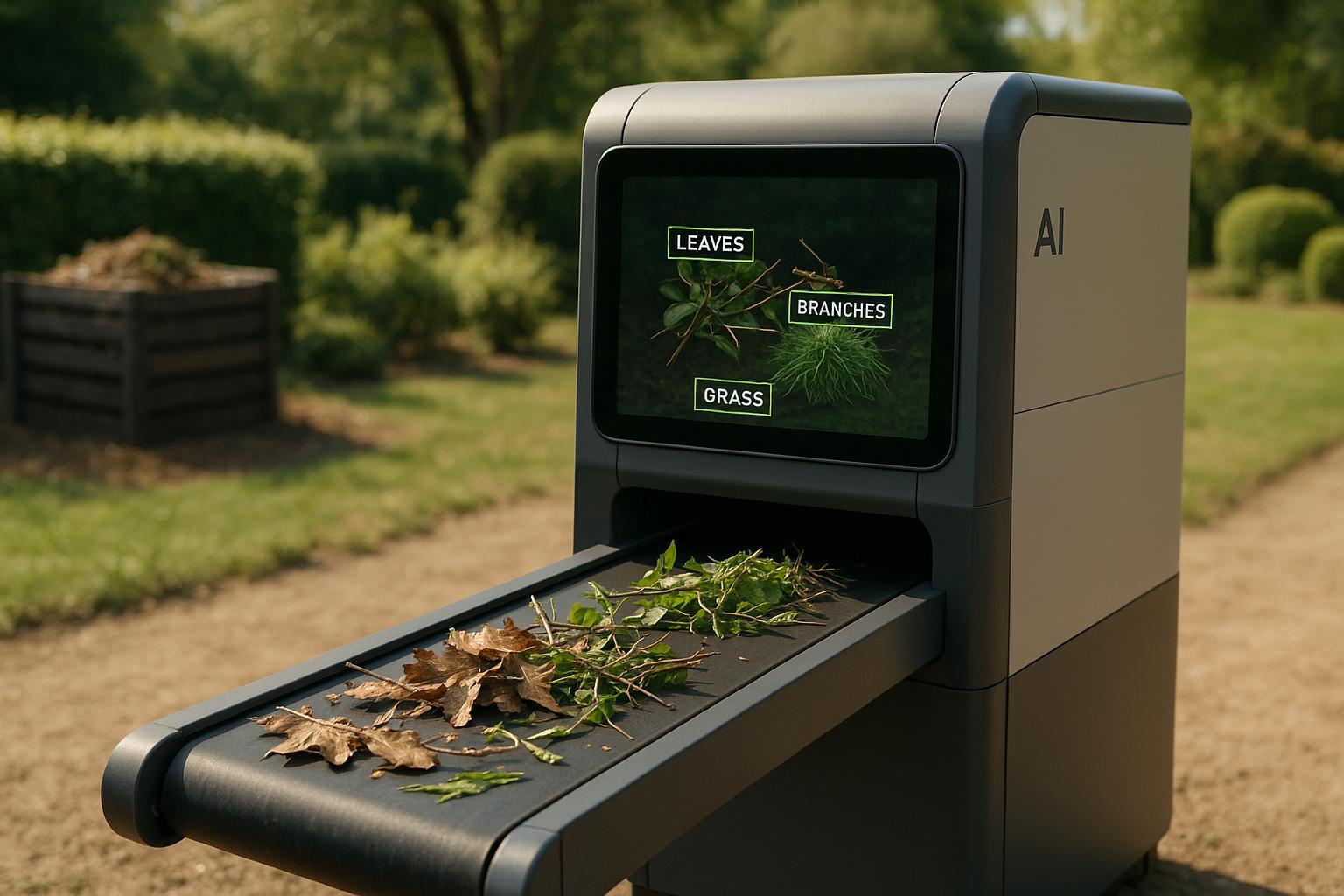
How AI Tracks Garden Waste in Real Time
Explore how AI revolutionizes garden waste management through real-time tracking, smart sorting, and enhanced composting techniques.